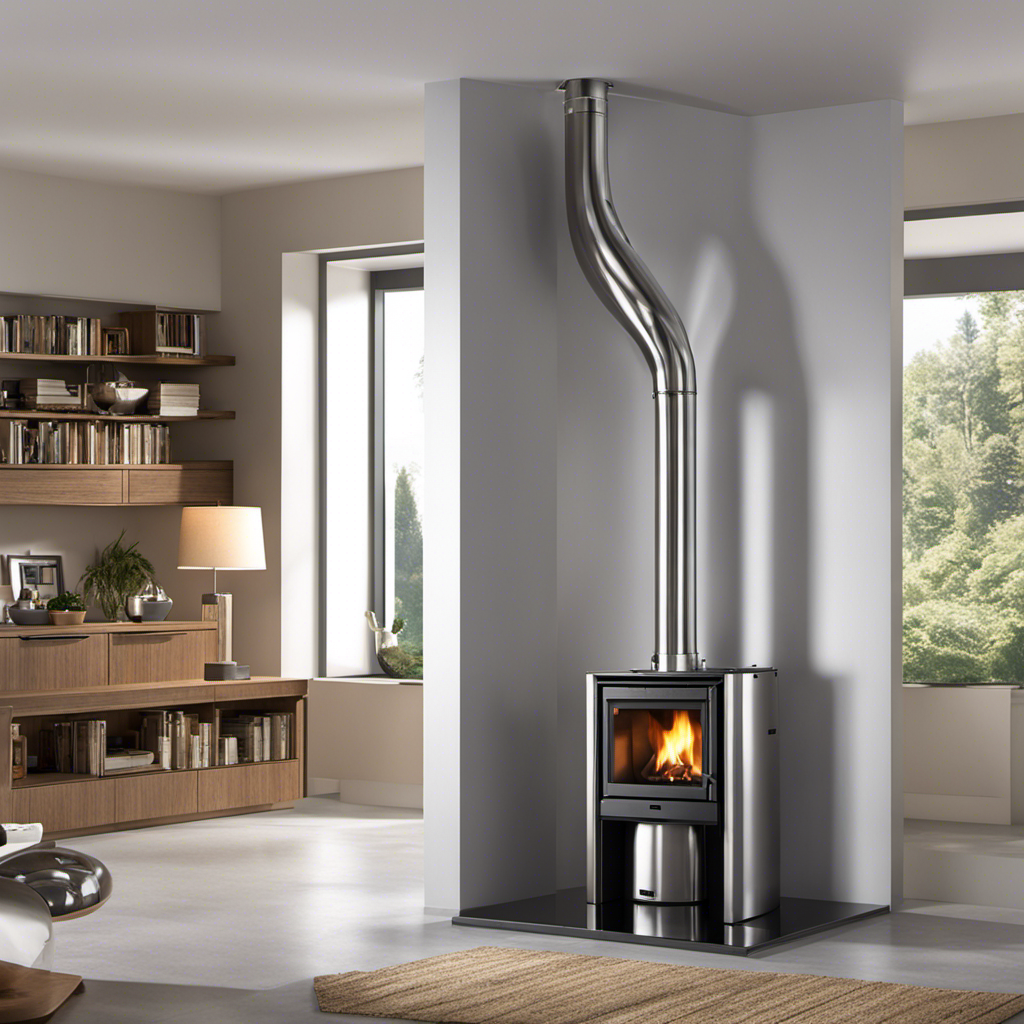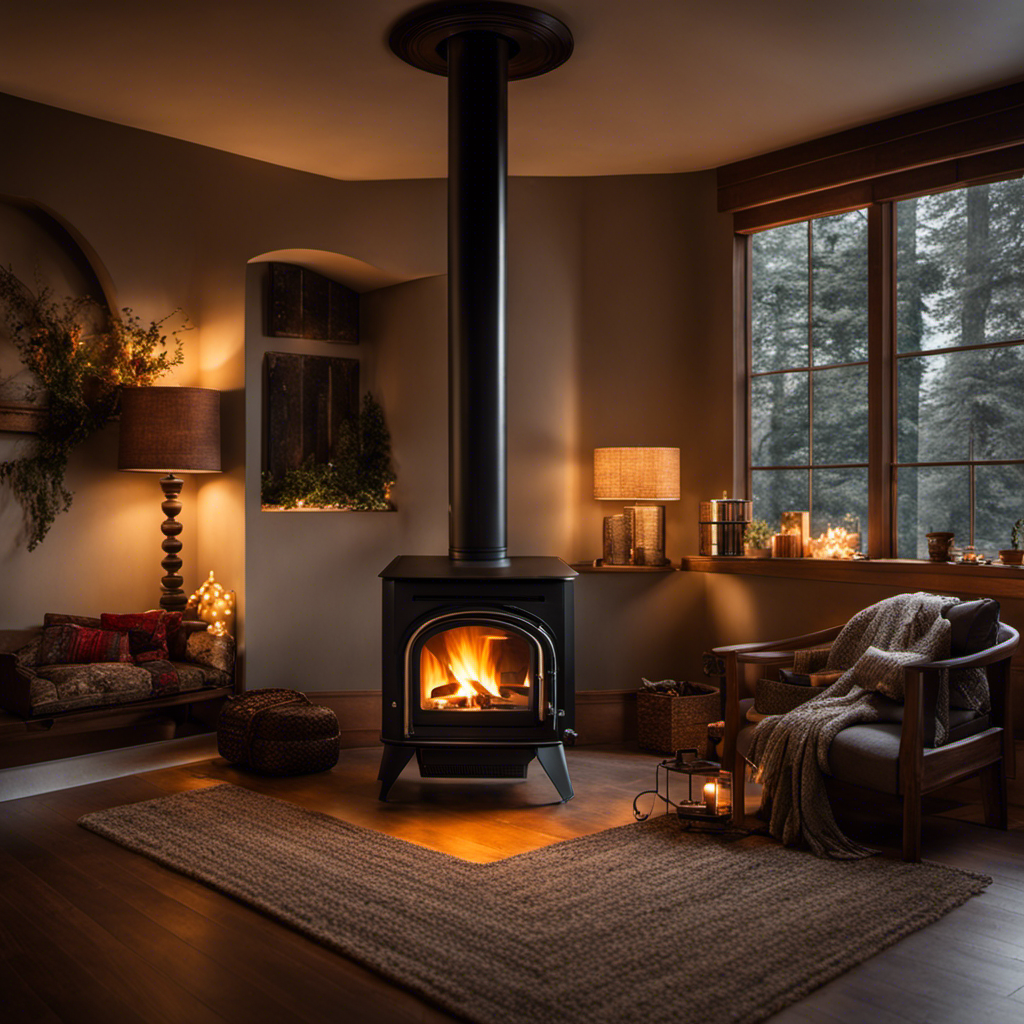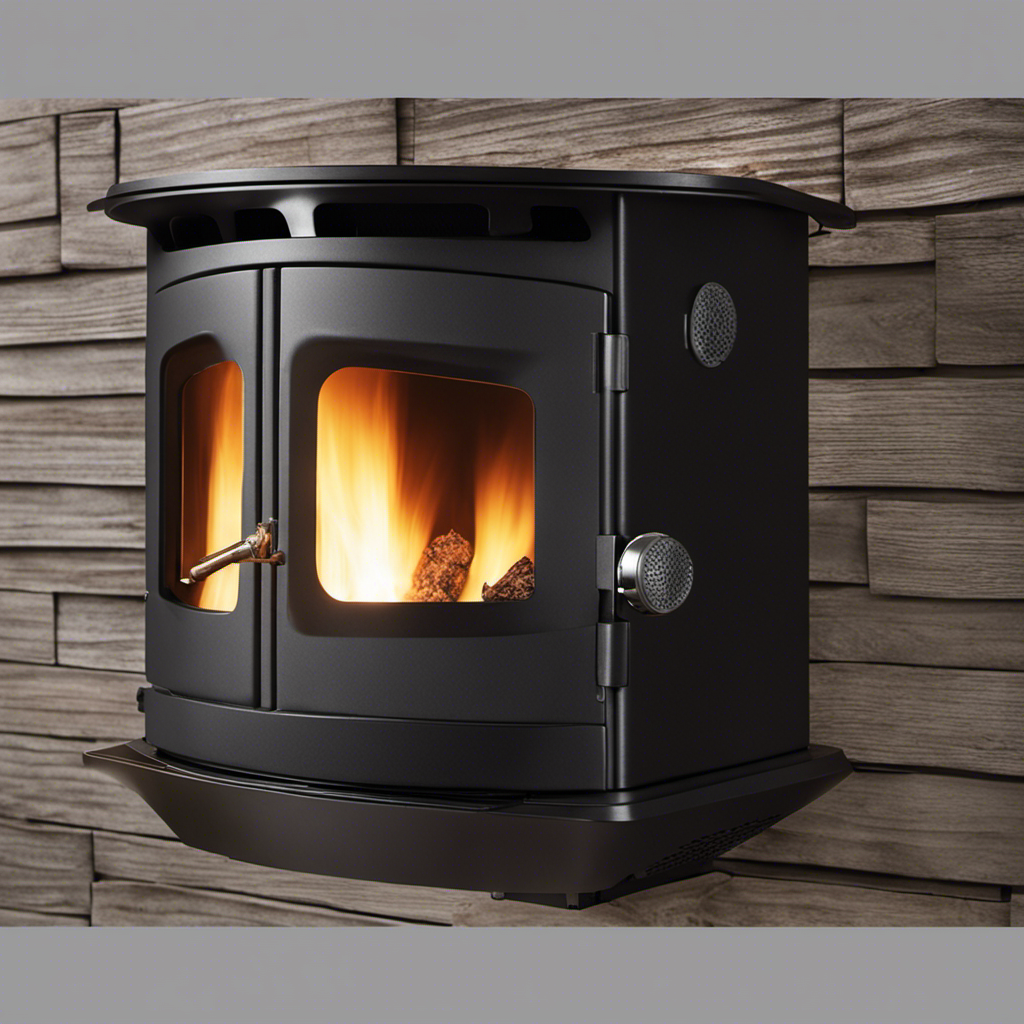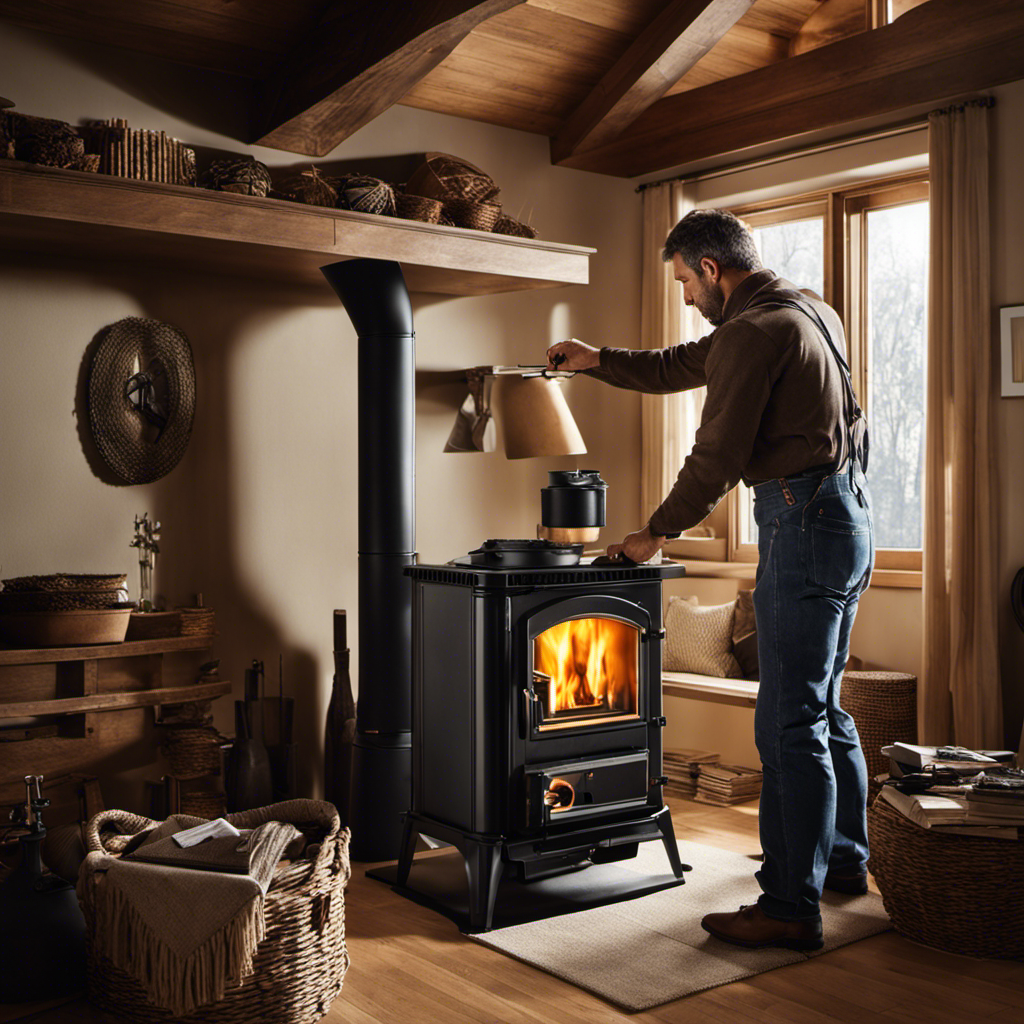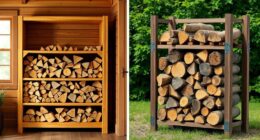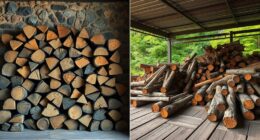Welcome to our guide that dives into the concealed secrets of venting pellet stoves.
Together, we’ll explore the inner workings of pellet stoves, discover the factors affecting venting distance, and learn how to maintain a safe and efficient venting system.
By following manufacturer recommendations and local codes, we can ensure optimal performance.
Join us as we unravel the secrets of pellet stove venting and harness the benefits of this modern heating alternative.
Let’s embark on this enlightening journey together!
Key Takeaways
- Pellet stoves use automated hopper systems to feed small, compressed wood or biomass pellets into the burn pot.
- The heat produced by the burning pellets is transferred to a heat exchanger, which then circulates the heated air into the room.
- The venting distance for a pellet stove depends on factors such as the stove type, venting system type, and local building codes.
- Following manufacturers’ recommendations and local building codes ensures safe and efficient operation of the pellet stove.
Factors Affecting Venting Distance
The venting distance for a pellet stove depends on factors such as the stove type, venting system type, and local building codes. Venting distance regulations are put in place to ensure the safe and efficient operation of pellet stoves.
Calculating the appropriate venting distance involves considering the heat output of the stove, the type of venting system used, and any specific requirements set by local building codes. Higher heat output stoves generally require longer venting distances to effectively remove excess heat and combustion byproducts.
Single-wall venting systems have lower heat resistance and are limited to shorter venting distances, while double-wall venting systems can be used for longer distances.
Following these regulations and using proper venting distance calculation methods is crucial for the safe installation and operation of a pellet stove.
Determining the Appropriate Venting Distance
When determining the appropriate venting distance for our pellet stove, we should follow the manufacturers’ recommendations and consult local building codes. This ensures proper venting installation and safe operation of the stove.
To calculate the venting distance, we need to consider factors such as the stove type, venting system type, and local regulations. Accurate measurements using a tape measure or laser distance measurer can help us plan the venting route. We should also take into account any obstacles or challenges along the route, such as walls or ceilings.
Consulting with a chimney sweep can provide professional assessment and recommendations for venting setups.
Tips for Maintaining the Pellet Stove Venting System
To keep our pellet stove venting system in good condition, we regularly clean and inspect it for any issues. Chimney maintenance is essential to ensure the safe and efficient operation of the pellet stove.
Cleaning the venting system using a chimney brush or vacuum helps prevent clogs and blockages that can restrict airflow. Regular inspections are necessary to identify any leaks, damage, cracks, holes, rust, or corrosion in the venting system. Addressing these issues promptly is crucial to avoid any potential hazards.
If you’re unsure about chimney maintenance or venting system troubleshooting, it’s recommended to hire a professional chimney sweep or heating technician. They can provide expert assessment and recommendations to ensure the proper functioning of the pellet stove venting system.
Regular maintenance and troubleshooting help keep the venting system in optimal condition, ensuring the safety and efficiency of the pellet stove.
Additional Information on Pellet Stoves
We recently came across some additional information that provides insights into chimney height recommendations and exhaust distance from windows for pellet stoves. Here are some key points to consider:
- Chimney installation: Follow manufacturers’ guidelines and local building codes for chimney height based on stove heat output and venting system type.
- Exhaust distance guidelines: Adhere to manufacturers’ recommendations and local building codes for exhaust distance from windows and combustible materials.
Importance of proper venting: Proper venting is crucial for removing excess heat and combustion byproducts from the stove.
Following guidelines: It’s important to follow manufacturers’ recommendations and local codes for venting distance to ensure safe and efficient operation of the pellet stove.
Maintenance and repairs: Regularly maintain and clean the pellet stove venting system, and hire a professional for maintenance and repairs.
Benefits of Pellet Stove as Heating Source
As homeowners, we can appreciate the benefits of using a pellet stove as our primary heating source. Pellet stoves offer numerous advantages, including energy efficiency, cost savings, and environmental friendliness. These stoves use compressed wood or biomass pellets as fuel, which are readily available and produce minimal emissions.
When it comes to chimney installation, it’s crucial to follow manufacturers’ guidelines and local building codes. Chimney height recommendations are based on the stove’s heat output and the type of venting system used. Adhering to exhaust distance guidelines is equally important. Manufacturers provide specific recommendations for the distance between the pellet stove exhaust and windows or other combustible materials.
Frequently Asked Questions
What Are the Different Types of Pellet Stoves Available in the Market?
Different types of pellet stoves available in the market include models that use different fuel options such as compressed wood pellets or biomass pellets. These stoves offer efficient heating options and have specific maintenance requirements.
Regular cleaning and inspection of the venting system is crucial to prevent clogs and ensure safe operation. Following manufacturers’ guidelines for maintenance and adhering to local building codes will help maintain the longevity and efficiency of the pellet stove.
Can a Pellet Stove Be Installed in Any Type of Home?
Installing pellet stoves in older homes can be a viable option due to their efficient heating capabilities and small space requirements.
The benefits of pellet stoves for small spaces include their ability to provide reliable heat while taking up minimal room.
However, it’s important to consider factors such as venting requirements and local building codes when installing a pellet stove in any type of home.
Consulting with professionals and following manufacturer guidelines ensures a safe and successful installation process.
Are There Any Safety Precautions That Need to Be Taken While Operating a Pellet Stove?
Safety precautions are essential when operating a pellet stove to ensure a secure and efficient experience. Regular maintenance, such as cleaning the venting system and inspecting for leaks or damage, is crucial. Following manufacturers’ recommendations and local building codes is vital to maintain a safe environment.
Hiring a professional chimney sweep or heating technician for maintenance or repairs is highly recommended. By adhering to these safety precautions and maintenance tips, we can enjoy the warmth and comfort of a pellet stove with peace of mind.
How Do Pellet Stoves Compare to Traditional Wood-Burning Stoves in Terms of Efficiency?
In terms of efficiency, pellet stoves have several advantages over traditional wood-burning stoves.
Pellet stoves burn small, compressed wood or biomass pellets, which have a higher energy density and burn more efficiently than traditional firewood. This means that pellet stoves can produce more heat with less fuel compared to wood-burning stoves.
Additionally, pellet stoves have automated hopper systems and precise control mechanisms, which allow for more efficient and controlled combustion.
This increased efficiency leads to reduced fuel consumption and lower environmental impact.
Are There Any Government Incentives or Rebates Available for Installing a Pellet Stove?
Yes, there are government incentives and rebates available for installing a pellet stove. These incentives aim to promote energy efficiency and reduce carbon emissions.
They vary by location, but commonly include tax credits, grants, or rebates for the purchase and installation of pellet stoves. Taking advantage of these incentives can help offset the upfront costs and make pellet stove installation more affordable.
It’s recommended to check with local government agencies or energy efficiency programs to learn about specific incentives available in your area.
Conclusion
Congratulations! You’re now a master of pellet stove venting. Armed with our insightful guide, you can confidently navigate the complexities of proper venting distance and ensure the safe operation of your pellet stove.
By following manufacturers’ recommendations and maintaining your venting system, you’ll experience the full benefits of this efficient heating source.
So go forth, unlock those secrets, and enjoy the warmth and comfort of your pellet stove without any worries!
Growing up surrounded by the vast beauty of nature, Sierra was always drawn to the call of the wild. While others sought the comfort of the familiar, she ventured out, embracing the unpredictable and finding stories in the heartbeat of nature.
At the epicenter of every remarkable venture lies a dynamic team—a fusion of diverse talents, visions, and passions. The essence of Best Small Wood Stoves is crafted and refined by such a trio: Sierra, Logan, and Terra. Their collective expertise has transformed the platform into a leading authority on small wood stoves, radiating warmth and knowledge in equal measure.

